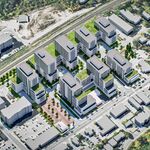The popularity of the lanes has more to do with the lack of other safe alternative routes in the area than the amount of things to do on Richmond/Adelaide. Without the lanes, the only other East-West options are College St or Queens Quay, both of which are too far away from the Entertainment Dist to be useful. When the lanes get extended to Parliament later this year, they will have filled a huge gaping hole in the downtown bike network.
View attachment 52250
But as far as "things to do", Richmond/Adelaide are just one block away from King and Queen streets, and pass through densely populated neighbourhoods. It's probably true that a lot of the cycling is local, however the Entertainment Dist is not just a neighbourhood but also a major destination, so many cyclists including myself come from other neighbourhoods city-wide or are simply passing through here on their way to somewhere else. For the most part, transportation infrastructure in general is not used only by people who live in the area.
As for political support, no increase in travel times for motorists have been reported due to the lanes, which seems to be the only thing that matters to our narrow-minded mayor and suburban councillors. On Jarvis, the amount of cyclists tripled when those lanes were installed, but because Ford was mayor and motorists were slowed down by a minute (boohoho cry me a river), council voted to kill it.
It was done as a pilot project to test different designs, evaluate the impact on traffic, and gather feedback. Eventually council will have to make a decision on whether the lanes should be made permanent (with possible improvements). This is not a done deal just yet, but so far things are looking good.





